About
About FUJIRETINA
Toranomon Hills Mori Tower 5F, 1-23-3, Toranomon, Minato-ku, Tokyo 105-6305, Japan
All presentations including discussions shall be made in English.
Organizations
Organizing Committee
Chair
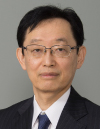
Biography

1985 Resident, Ophthalmology, Kyushu University
1992 Visiting Assistant Professor, Doheny Eye Institute, CA, USA
2002 Chair, Ophthalmology, Kagoshima University, Kagoshima Japan
2020 Vice President, Kagoshima University
Members

Biography

Clinical professor, Department of Ophthalmology, Tokyo Dental College Suidobashi hospital
Assistant professor, Department of Ophthalmology, Hokkaido University School of Medicine
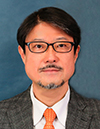
Faculty of Medicine and Graduate School of Medicine
Hokkaido University
Biography

Faculty of Medicine and Graduate School of Medicine
Hokkaido University

Biography


Biography

Dr. Keiko Kataoka is a renowned adult medical retina specialist at Kyorin University's Department of Ophthalmology. She earned her MD and PhD from Nagoya University School of Medicine, where she later served as an assistant professor. During her PhD, she conducted pivotal research on pathologic angiogenesis using a Retinopathy of Prematurity (ROP) mouse model.
Her research journey led her to a fellowship at the Massachusetts Eye & Ear Infirmary, Harvard Medical School, where she studied photoreceptor cell death and inflammation following retinal detachment. Upon returning to Nagoya University, she published several influential papers using Optical Coherence Tomography (OCT) angiography, proposing new diagnostic criteria for neovascular Age-Related Macular Degeneration (AMD) and revealing morphological changes in macular neovascularization under anti-VEGF treatment.
Since joining Kyorin University in 2021, Dr. Kataoka has been dedicated to patient care and research on age-related macular diseases and pachychoroid diseases. Her work continues to contribute significantly to the field of ophthalmology.

Biography

Motohiro Kamei, M.D.’s career in ophthalmology began with training under Professor Reizo Manabe (Cornea specialist) at Osaka University for 2 years, followed by a vitreoretinal fellowship with Yasuo Tano, M.D. at Osaka National Hospital.
During his fellowship (in 1992), he developed a novel surgical technique with tPA and liquid perfluorocarbon for evacuating submacular hemorrhage associated with age-related macular degeneration.
In 1995, he received an academic position in the Department of Ophthalmology at Osaka University with Professor Tano.
From 1996 to 1999, he worked with Hilel Lewis, M.D. and Joe G Hollyfield, Ph.D. at Cleveland Clinic Foundation as an international fellowship. His research focused on AMD; revealed accumulation of TIMP-3 with age and more in AMD lesion, intravitreal tPA penetration through the retina with subretinal hemorrhage and a novel surgical modification of limited macular translocation with out-pouching the sclera using titanium clips. He also studied on biodegradable drug delivery system for preventing proliferative vitreoretinopathy (PVR) after establishing a pig PVR model, for which he received 1st place for1999 F. Merlin Bumpus Ph.D. Junior Investigator Award.
After returning to Japan, he transiently moved to Kyoto Prefectural University of Medicine and assumed a chief of the vitreoretinal service for one and half years (2000-2002). After that, he became an associated professor followed by a professor at Osaka University Hospital in 2011.
He assumed a chairman of Ophthalmology at Aichi Medical University in 2015. He performed more than 4000 vitreoretinal surgeries. His research projects have three topics: optics of heads-up surgery, surgical and pharmacological treatments for retinal vein occlusion, and retinal prosthesis.
Japan Ophthalmology Society (Board, Director of Program Committee), Japanese Retina and Vitreous Society (Executive Director), Japanese Society of Ophthalmic Surgeons (Program committee, 2010- 2013), Japanese Society of Ophthalmic Diabetology (Executive Trustee), Japanese Society for Ocular Circulation (trustee), The Association for Research in Vision and Ophthalmology (Program committee, 2008-2010), The American Academy of Ophthalmology, Vail vitrectomy meeting, Club Jules Gonin
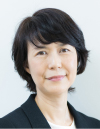
Biography

She received her MD from Osaka University Graduate School of Medicine in 1989, undertook her residency in the Department of Ophthalmology at Osaka University Hospital, and completed a clinical fellowship at Osaka Rosai Hospital. After she received her PhD from the Graduate School of Osaka University, she conducted many clinical and basic research projects in relation to retinal and macular diseases as Assistant and Associate Professor in the Department of Ophthalmology at Osaka University. From 2012 to 2016, she worked as an administrator in the Department of Ophthalmology at Sumitomo Hospital in Osaka.
Dr. Gomi has published more than 200 original peer-reviewed articles in areas relating to the retina, the choroid, and clinical ophthalmology, as well as imaging. She received an Achievement Award from the American Academy of Ophthalmology in 2009, and another from the Asia-Pacific Academy of Ophthalmology in 2012. She serves as a councilor of the Japanese Ophthalmological Society and as a director of the Japanese Retina Vitreous Society.
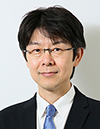
Biography

1992-1993 Resident in Nagoya University Hospital
1993-1997 Clinical and Research Fellowship at Nagoya University Graduate School of Medicine (Ph.D.)
1998-1999 Lecturer, Ophthalmology, Nagoya University Hospital
1999-2001 Research Fellow, Ophthalmology, University of Michigan. (Prof. Paul A. Sieving)
2001-2006 Assistant Professor, Ophthalmology, Nagoya University School of Medicine
2006-2011 Associate Professor, Ophthalmology, Nagoya University School of Medicine
2011- Professor and Chairperson, Ophthalmology, Mie University Graduate School of Medicine

Biography

In the 1990s, Dr. Tsujikawa’s work focused on the study of the leukocyte-, platelet-endothelial interaction in pathologic retinal microcirculation, using various animal models. He has contributed to the elucidation of the role of these interactions in the mechanisms for development of diabetic retinopathy, uveitis, and ischemia-reperfusion injury. In the 2000s, his interest shifted to clinical investigations using the various modern imaging modalities available, such as OCT, AO-SLO, FA, ICGA, and FAF. With the help of these modalities, he has contributed to the pathophysiology of various macular diseases, especially wet age-related macular degeneration, polypoidal choroidal vasculopathy, and retinal vein occlusion. Based on his substantial contributions towards our understanding of macular diseases, he was selected as a member of The Macula Society in 2010. His more recent work has focused on the genome-wide association study on age-related macular degeneration and myopic complications.
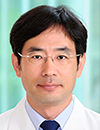
Biography


Biography

Dr. Yonekawa has contributed over 300 original papers, editorials, and textbook chapters to the field, with focuses on pediatric retina surgery, pediatric medical retinal diseases, rhegmatogenous retinal detachment, endophthalmitis, COVID-related practice patterns, geographic access disparities, opioid prescription patterns, and ocular trauma.
He serves as an assistant editor for RETINA, deputy editor for Journal of VitreoRetinal Diseases (JVRD), and section editor for Ophthalmic Surgery Lasers and Imaging Retina (OSLI Retina), and Review of Ophthalmology. He is on the editorial board for the Journal of Association for Pediatric Ophthalmology and Strabismus (JAAPOS), is editor in chief of Retina Roundup, co-editor of Vit Buckle Academy, and section editor for several textbooks.
Dr. Yonekawa currently serves on the board of the American Society of Retina Specialists (ASRS) as the Early Career Section Co-Chair, the Executive Committee for the Vit Buckle Society, where he is also the chair of the program committee, and active member of the Retina Society, Macula Society, Vail Vitrectomy, and the Association of Pediatric Retina Specialists. He has received recognitions including the ASRS Senior Honor Award, AAO Achievement Award, The Ophthalmologist Power List of Rising Stars, Philadelphia Magazine top doctor, and Castle Connolly top doctor.
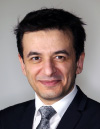
Biography

His principal areas of interest include retinal diseases, vitreoretinal surgery, and imaging. He is the author of over 190 peer-reviewed medical and scientific articles and has made numerous contributions to ophthalmology textbooks. He has been an invited lecturer for many society meetings and was awarded the American Academy of Ophthalmology Achievement Award in 2010.
Professor Tadayoni was graduated as medical doctor and ophthalmologist from Paris V University. He completed his vitreoretinal fellowship at Lariboisiere University Hospital, Paris. He also pursued his PhD at Paris VII University, and Paris Vision Institute. He was later awarded HDR, the highest academic degree in France. He is very committed to education and has the honor of having trained several clinical vitreoretinal and research fellows.
Advisor
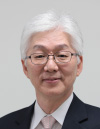
Biography

1983 Resident in Ophthalmology, Department of Ophthalmology, Osaka University Hospital
1984 Resident in Ophthalmology, Osaka Rosai Hospital
1985 Staff in Ophthalmology, Osaka Rosai Hospital
1990 Research Associate, University of Pittsburgh
1993 Assistant Professor, Department of Ophthalmology, Osaka University Medical School
1997 Associate Professor, Department of Ophthalmology, Osaka University Medical School
2005 Professor and Chairman, Department of Ophthalmology, Shiga University of Medical Science
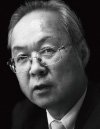
Biography

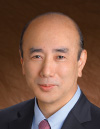
Biography

1982 Resident in Ophthalmology, Department of Ophthalmology, Keio University Hospital
1984 Resident in Ophthalmology, National Tokyo 2nd Hospital
1985 Clinical Fellow and chief staff physician in Ophthalmology, National Tochigi Hospital
1987 Instructor in Ophthalmology, Department of Ophthalmology, Keio University Hospital
1989 Research Fellow (ophthalmic pathology), Vitreoretinal Associate, Duke University, Eye Center
1992 Assistant Professor, Department of Ophthalmology, Kyorin University
1997 Associate Professor, Department of Ophthalmology, Kyorin University
2005 Professor, Department of Ophthalmology, Kyorin University
2008 Professor and Chairman, Department of Ophthalmology, Kyorin University

